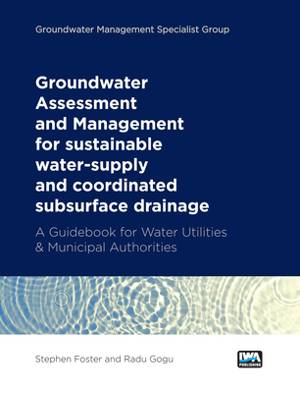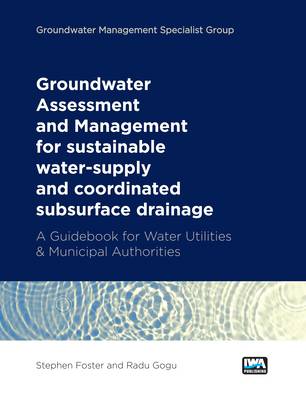
- Afhalen na 1 uur in een winkel met voorraad
- Gratis thuislevering in België vanaf € 30
- Ruim aanbod met 7 miljoen producten
- Afhalen na 1 uur in een winkel met voorraad
- Gratis thuislevering in België vanaf € 30
- Ruim aanbod met 7 miljoen producten
Zoeken
Groundwater Assessment and Management: For Sustainable Water-Supply and Coordinated Subsurface Drainage
A Guidebook for Water Utilities & Municipal Authorities
Stephen Foster, Radu Gogu
Paperback | Engels
€ 62,95
+ 125 punten
Omschrijving
Groundwater beneath cities is important. Water utilities and private abstractors use is it as a secure source of water-supply and municipal authorities have to cope with it when planning sanitation and using underground space for building and transportation infrastructure, but all too often neither have a comprehensive understanding. This Guidebook aims to highlight what water utilities and municipal government can do to improve groundwater assessment, management and monitoring to avoid experiencing 'nasty surprises'. Groundwater, especially from deeper aquifers, is a critical resource for enhancing urban water-supply security under climate-change stress. But to achieve its use sustainably will require adaptive promotion of resource management and protection, according to local circumstances. In recent times municipal governments are making much more use of urban subsurface space (especially down to 15-metres depth) for construction. Traditionally the drainage and stability of such structures were achieved by individual site investigation, but today a more coordinated approach is needed to managing shallow groundwater conditions. The Guidebook is divided into three complementary parts: Part A is intended for guidance of water-utility, together with water-resource agency and municipal sanitation department, staff working to improve urban water-supply resilience, with its inevitable requirement to get more involved in groundwater management. Part B is intended for guidance of municipal government authorities working to improve the design and execution of urban infrastructure to avoid potentially costly subsurface drainage issues, structural instability and groundwater flooding problems. Part C provides a series of case histories on urban groundwater management from around the world.
Specificaties
Betrokkenen
- Auteur(s):
- Uitgeverij:
Inhoud
- Aantal bladzijden:
- 50
- Taal:
- Engels
Eigenschappen
- Productcode (EAN):
- 9781789063103
- Verschijningsdatum:
- 15/06/2022
- Uitvoering:
- Paperback
- Formaat:
- Trade paperback (VS)
- Afmetingen:
- 156 mm x 234 mm

Alleen bij Standaard Boekhandel
+ 125 punten op je klantenkaart van Standaard Boekhandel
Beoordelingen
We publiceren alleen reviews die voldoen aan de voorwaarden voor reviews. Bekijk onze voorwaarden voor reviews.











